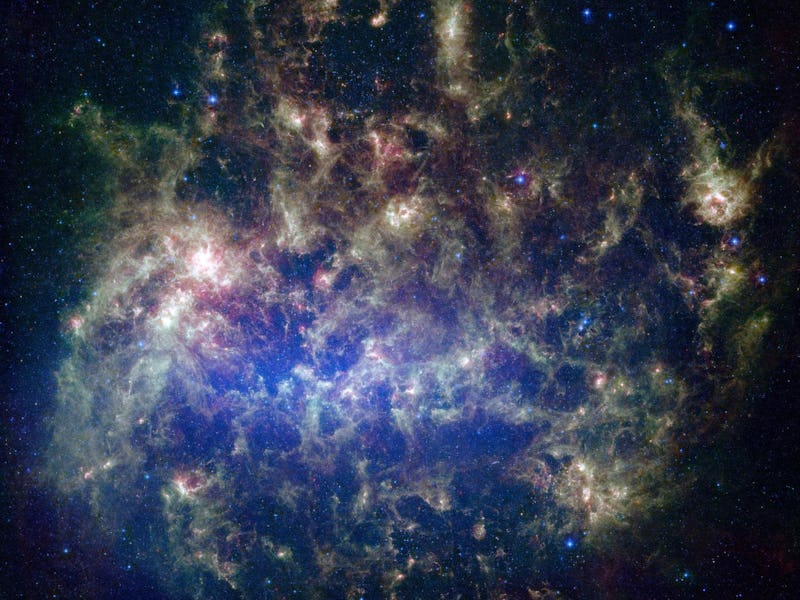
New data from NASA’s Spitzer Space Telescope and the Herschel Space Observatory is undoing a century of scientific evidence, boggling astronomer’s minds and proving that nothing in the universe is set in stone.
There are several star clusters sprinkled throughout the Large Magellanic Cloud, a galaxy neighboring the Milky Way. A star cluster is a group of stars, originally believed to all be created around the same time, and held together by gravity until galactic winds eventually sweep them apart. Clusters have acted as a kind of control group for scientists who are studying how new stars form. But, now, it appears they aren’t actually controlled environments at all.
In some of these star clusters, a research group from the International Centre for Radio Astronomy Research in Perth observed the presence of newborn stars, which would indicate the cluster are not on a timestamped life but rather constantly evolving. To verify this, the group cross-matched the sites of the clusters with sites of newborn stars. In the resulting analysis, scientists concluded that there were at least 15 young stars residing in much older clusters. The results are published in the new issue of the Monthly Notices of the Royal Astronomical Society.
“We believe the younger stars have actually been created out of the matter ejected from older stars as they die, which would mean we have discovered multiple generations of stars belonging to the same cluster,” Kenji Bekki an ICRAR astronomer and co-author of the new paper, said in a press release.
This throws all previous knowledge of clusters out the window, affecting models and data that have been collected over the past 100 years. To further understand this new discovery, scientists will be using the Hubble Space Telescope to probe the Large Magellanic Cloud with ultraviolet light to see beyond the stellar dust shrouding the young stars from scientists’ view.
“If we point Hubble at the clusters we’ve been studying, we should be able to see both young and old stars and confirm once and for all that star clusters can contain several generations of stars,” said Bekki.